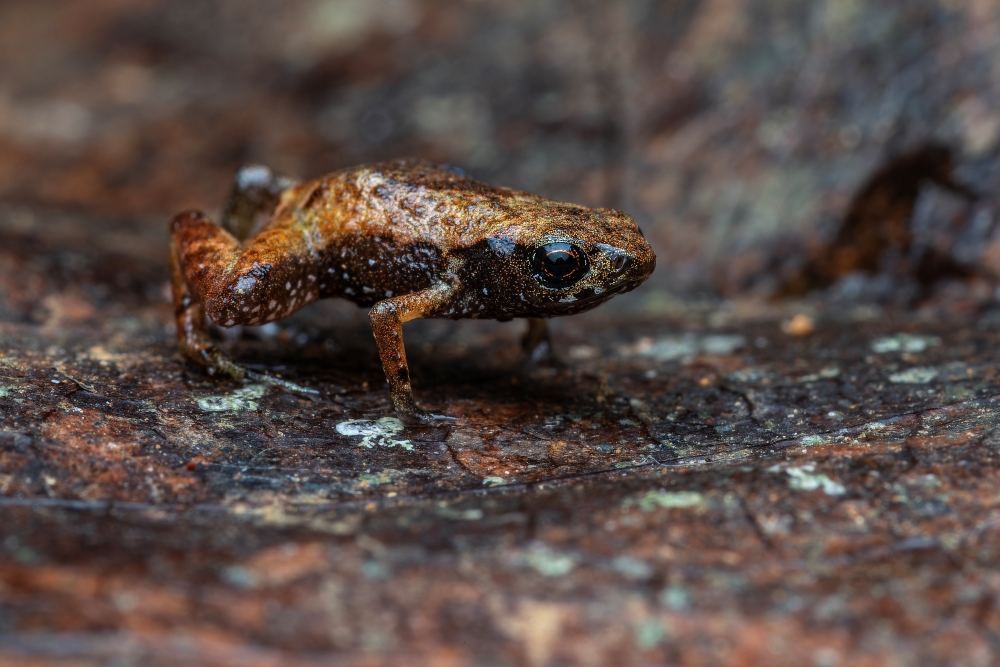Few can resist the appeal of an adorable animal; from diddy chameleons to cute baby cows, the world is full of species that make you go “awww”. Now, it seems the ranks of impossibly small and incredible creatures have been bolstered by one new addition: a brand-new species of flea-toad that is the world’s second smallest vertebrate.
The new species belongs to the genus Brachycephalus, more commonly known as the flea toads. The other six members of the genus are pretty tiny, with some that are less than 1 centimeter long when they reach their final adult size. They are also famous for the appropriately seasonal and bright orange pumpkin toadlets, which just so happen to be poisonous.
Researchers were first alerted to a potential new species by the advertisement vocalizations made by the adults, when they undertook sampling surveys from June 2021 to May 2022 in Ubatuba, on the coast of São Paulo state, in an area of the Atlantic Rainforest.
“One of the individuals measured 6.95 mm, which is currently the second smallest adult vertebrate ever described, only larger than another individual of a different congeneric [belonging to the same genus B. pulex] species,” wrote the researchers in a paper describing the new species.
While that individual closely resembled another member of its genus, B. hermogenesi, a combination of morphological, bioacoustics, and DNA analysis revealed that it was distinct from the other members of the genus.

These tiny toads spend much of their time hidden in rainforest leaf litter.
“There may have been specimens belonging to the new species among those that served as a basis for describing B. hermogenesi in 1998,” said corresponding author Luís Felipe Toledo in a statement, suggesting the use of historical DNA sequencing tools to clear up any remaining uncertainty. Historical DNA is obtained from zoological museum and herbarium specimens.
The new species has been named Brachycephalus dacnis in honor of Project Dacnis, a conservation and research NGO that works to support areas of Atlantic Rainforest.
The team notes that this marks the seventh flea toad discovered but suggests that more may be out there, since they are so small and spend much of their time hiding in the leaf litter of the forest floor, which they almost perfectly match. They also propose that further species could also push the bounds of what might be the lowest body size in vertebrates.
“The diversity of these miniature frogs may be far greater than we think. Hence the importance of describing as many traits and features as possible, to expedite the description process and get to work on conservation as quickly as possible,” said Toledo.
The flea toads, despite being very small, share some traits of much larger frogs, though they do have fewer fingers and toes.
“There are small toads with all the characteristics of large toads except for their size. This genus is different,” Toledo explained. “During its evolution, it underwent what we biologists call miniaturization, which involves loss, reduction and/or fusion of bones, as well as fewer digits and absence of other parts of their anatomy.”
Oddly for toads, they also do not have tadpoles, instead hatching from their eggs as ready-formed but even tinier versions of the adults.
The study is published in Zoological Science.
Source Link: World’s Second Smallest Vertebrate Is A New Species Of 7-Millimeter Teeny Tiny Toad